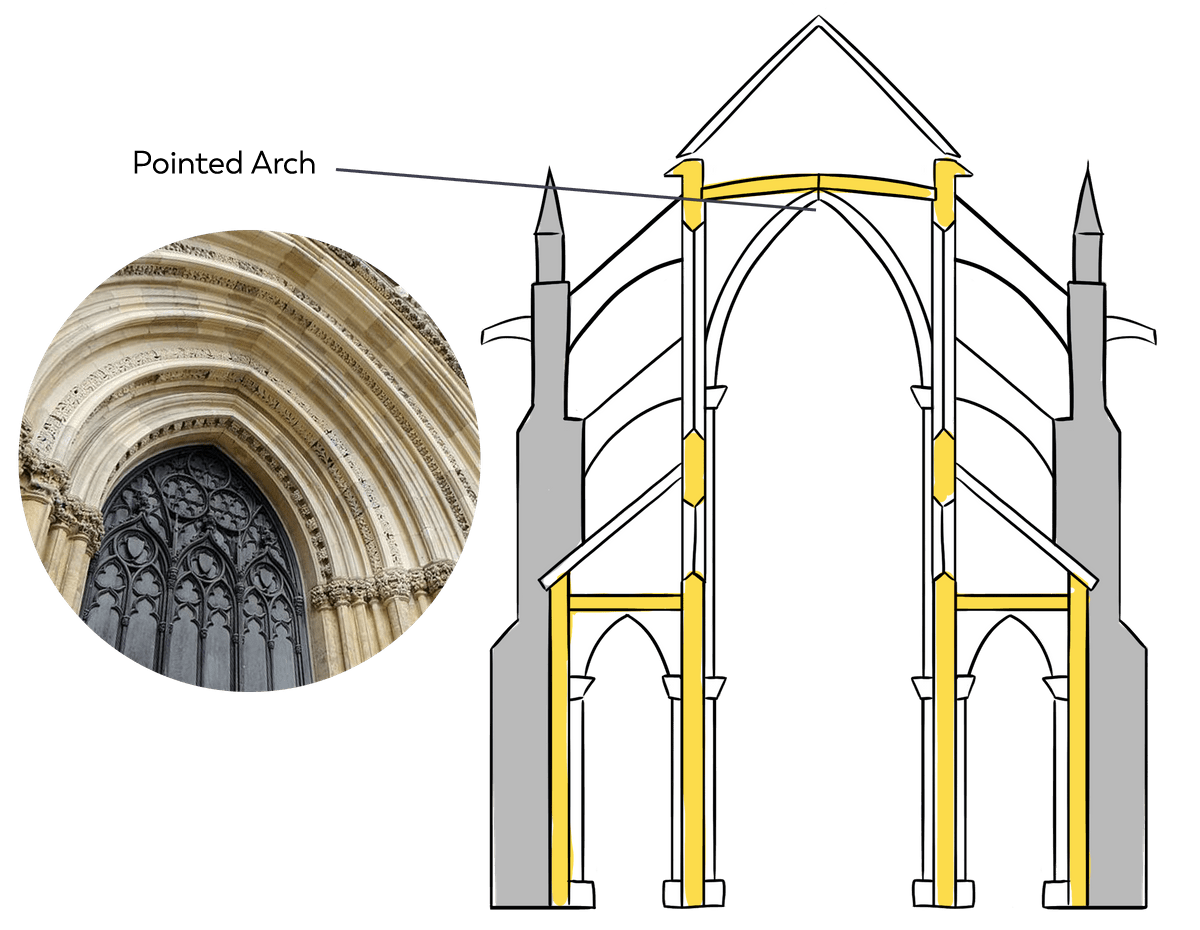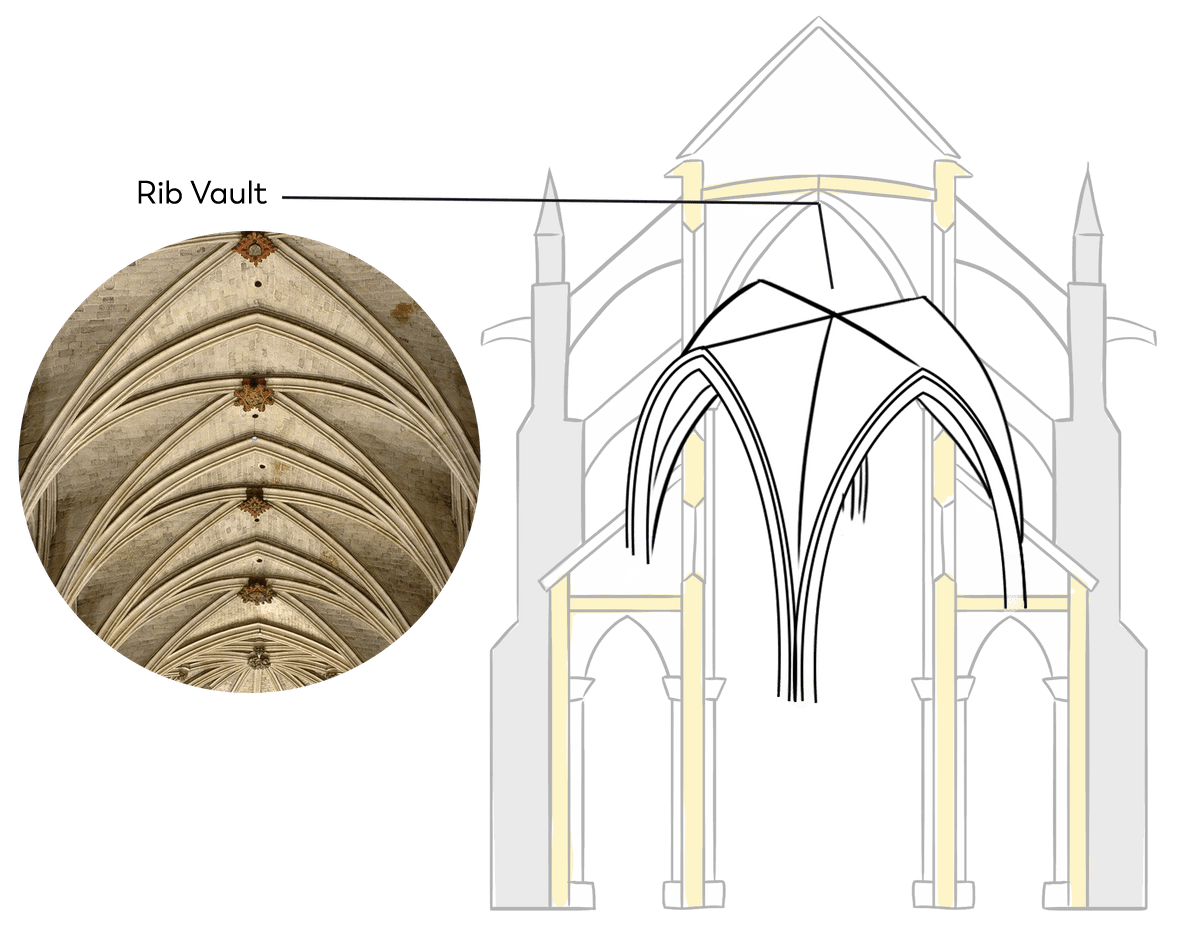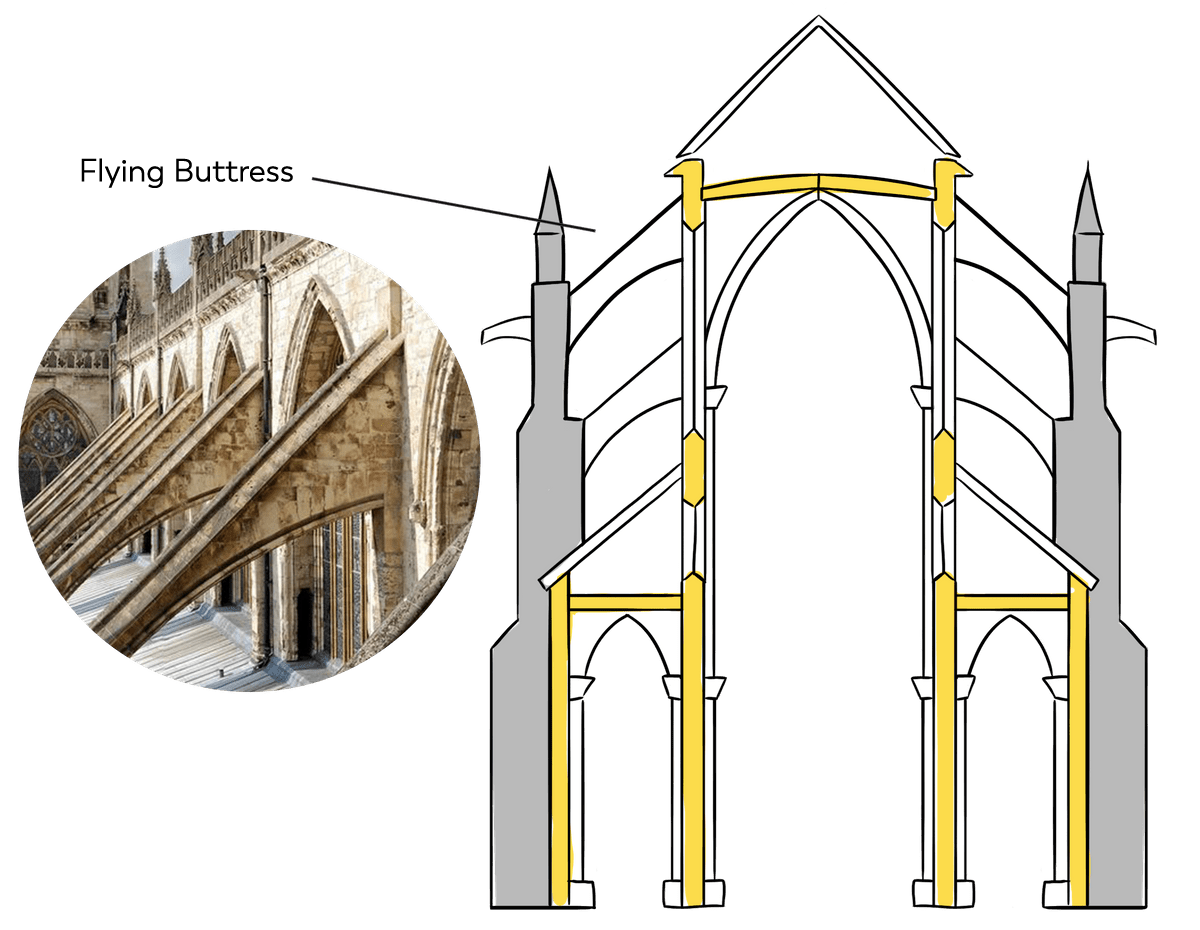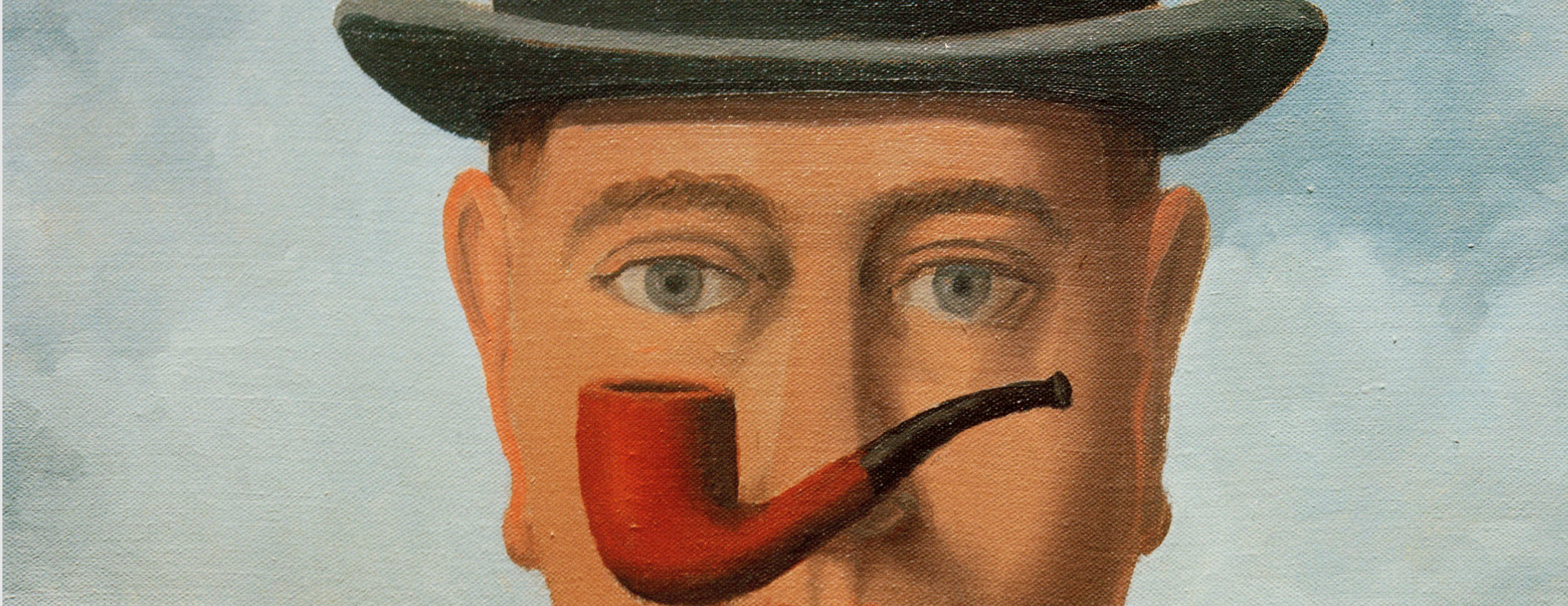What were the new building techniques used in Saint-Denis?
The Pointed Arch (pointed shape) replaced the rounded arch.
Crossed ribs, consisting of two crossed pointed arches, made the vault. This was held up by pillars rather than the walls.
The buttress is placed against the pillars. It also provides support for the vaulted ceiling.
With these new building techniques, walls no longer needed to be thick. Big windows could be installed in the walls!

In Gothic architecture, walls are thinner and windows bigger, made possible by technical innovations such as crossed ribs.







